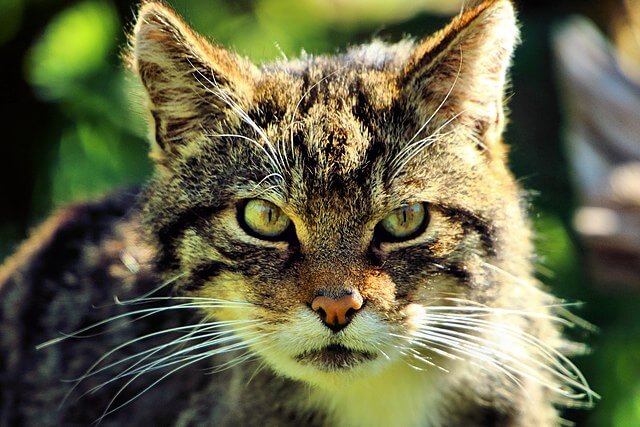
New research conducted by NatureScot has revealed a dire situation for the Scottish wildcat population, with the species standing on the precipice of extinction.
The study, which spanned five years and was part of the Scottish Wildcat Action project, has concluded that there are alarmingly few wildcats left in the country, making the population non-viable.
The research identified hybridisation as a major threat to the Scottish wildcats. Hybridisation occurs when wildcats mate with feral or domestic cats, resulting in a dilution of the wildcat gene pool. This interbreeding has become prevalent, with the majority of wild-living cats now being hybrids. Disease and habitat loss were also recognised as additional risks contributing to the decline of the species.
Biodiversity Minister Lorna Slater expressed deep concern, highlighting that the existence of this iconic and beloved species is now in jeopardy. The previous assessment of the Scottish wildcat as “functionally extinct” aligns with the findings of this latest research, emphasising the critical state of the population.
In response to the research, the Scottish Wildcat Action project team has put forward recommendations to help save the species. These recommendations include releasing captive-bred wildcats in specific locations, implementing measures to neuter hybrid and feral cats, and improving habitats to support wildcats.
The project conducted surveys in priority areas to target conservation efforts effectively. Genetic tests were performed on 529 cat samples, but none of them exhibited a high enough genetic purity to be considered wildcats. The study also analysed 118 deceased cats, more than half of which were killed on roads, but none of them were confirmed as wildcats. The evidence of wildcats in certain regions, such as the Highlands north of Lairg in Sutherland, and Argyll and the Trossachs, was scarce based on public sightings, camera-trap surveys, and road fatalities.
Funded by the National Lottery Heritage Fund, the Scottish Wildcat Action project revealed that over several generations since the 1960s, wildcats, wildcat hybrids, and domestic cats have freely interbred, leading to a phenomenon known as a hybrid swarm.
Mrs Slater said: “Reversing the dramatic losses in nature that we have seen in recent times is one of the defining challenges that our country faces.”
The Scottish government has expressed its commitment to safeguarding and restoring the natural habitats of Scotland. Dr. Roo Campbell, NatureScot’s mammal adviser, emphasised that the five-year project is just the beginning of a journey to revive the Scottish wildcat population.
He said: “The ultimate goal must be to establish a population of wildcats that does not need further human intervention to secure its survival.
“We’re hopeful that we can achieve this by working together now to protect and restore this iconic species for generations to come.”
As part of conservation efforts, a license was recently granted for the release of Scottish wildcats bred in captivity by the Royal Zoological Society of Scotland (RZSS) in the Cairngorms National Park. This initiative aims to support the preservation of the species in its natural habitat.
RZSS head of conservation Dr Helen Senn said: “These reports show that wildcats are truly on the brink of extinction in Britain, and that a significant amount of work still needs to be done to secure a future for the Scottish wildcat population.”
——————————————————————————
At Natural World Fund, we are passionate about stopping the decline in our wildlife.
The declines in our wildlife is shocking and frightening. Without much more support, many of the animals we know and love will continue in their declines towards extinction.
When you help to restore a patch of degraded land through rewilding to forests, meadows, or wetlands, you have a massive impact on the biodiversity at a local level. You give animals a home and food that they otherwise would not have had, and it has a positive snowball effect for the food chain.
We are convinced that this is much better for the UK than growing lots of fast-growing coniferous trees, solely to remove carbon, that don’t actually help our animals to thrive.
This is why we stand for restoring nature in the UK through responsible rewilding. For us, it is the right thing to do. Let’s do what’s right for nature!
Support our work today at https://naturalworldfund.com/ and join in the solution!

